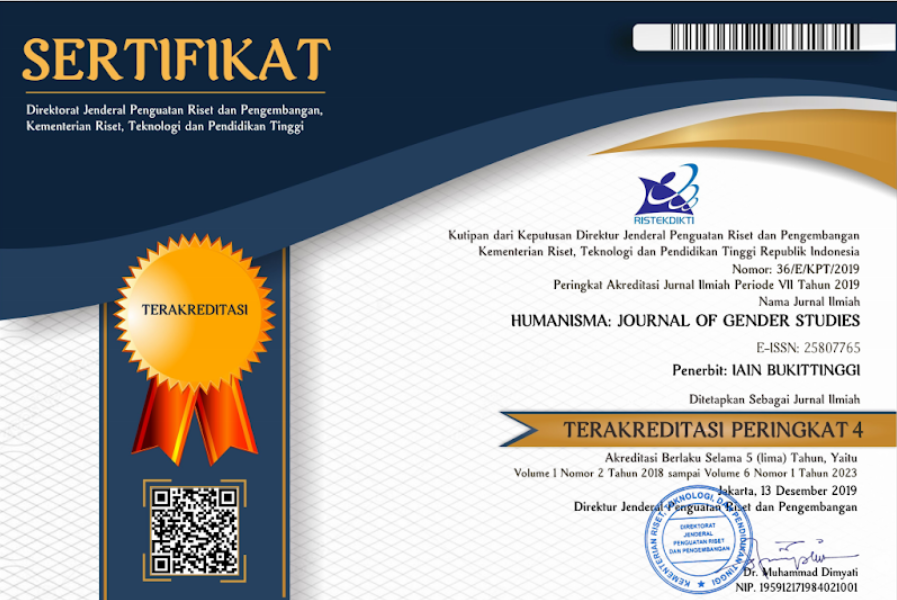EMPATHY IN EARLY CHILDHOOD:A PRELIMINARY STUDY
DOI:
https://doi.org/10.30983/jh.v2i2.813Abstract
Nowadays, bullying is still becoming an unsolvable issue in Indonesia. Among students, bullying phenomenon happens started from kindergarten level untill high school level. By having empathy, children are being much more understanding, more adept at handling anger and daring to say no to commit violence, including bullying. This current research examines the preschoolers’ empathy through self-report in response to short clip. The short clip assesses the extent to which children endorsed behaviours that were regarded as showing their empathy towards others (cognitive and affective). A total of 50 preschoolers with age 4-6 year old participated in this study. By decriptive analysis, result found that all preschoolers with the exception of a few showed empathy in two components, both cognitive and affective. This study implies that in order to elevate children’s empathy, parents must be modelling how to identify and express emotions toward them.
 Saat ini, intimidasi masih menjadi masalah yang tidak dapat diselesaikan di Indonesia. Di kalangan siswa, fenomena bullying terjadi mulai dari tingkat TK hingga tingkat SMA. Dengan memiliki empati, anak-anak menjadi jauh lebih pengertian, lebih mahir dalam menangani kemarahan dan berani mengatakan tidak untuk melakukan kekerasan, termasuk bullying. Penelitian saat ini meneliti empati anak-anak prasekolah melalui laporan diri sebagai tanggapan terhadap klip singkat. Klip pendek menilai sejauh mana anak-anak mendukung perilaku yang dianggap menunjukkan empati mereka terhadap orang lain (kognitif dan afektif). Sebanyak 50 anak prasekolah dengan usia 4-6 tahun berpartisipasi dalam penelitian ini. Dengan analisis deskriptif, hasil menemukan bahwa semua anak prasekolah dengan pengecualian beberapa menunjukkan empati dalam dua komponen, baik kognitif dan afektif. Studi ini menyiratkan bahwa untuk meningkatkan empati anak, orang tua harus menjadi model bagaimana mengidentifikasi dan mengekspresikan emosi terhadap mereka.
Keywords:Â Empathy, preschooler, cognitive-affective empathy, compassionate
Â
References
Borba, M. (2002). Building moral intelligence: The seven essential virtues that teach kids to do the right thing. San Fransisco: Jossey Bass
Batson, C.D. (1991). The altruism question: Toward a social- psychological answer. Hillsdale, NJ: Erlbaum.
Hoffman, M.L. (2000). The measurement of empathy. In C. E. Izard (Ed.), Measuring emotions in infants and children (pp. 279-296). Cambridge, UK: Cambridge University Press.




Miller, P.A., & Eisenberg, N. (1988). The relation of empathy to aggressive and externalizing/antisocial behavior. Psychological Bulletin, 103, 324-344.


Mehrabian, A. (1997). Relations among personality scales of aggression, violence, and empathy: Validational evidence bearing on the Risk of Eruptive Violence Scale. Aggressive Behavior, 23, 433-445.


Kaukiainen, A., Björkqvist, K., Lagerspetz, K., Österman, K., Salmivalli, C., Rothberg, S. &Ahlbom, A. (1999). The relationships between social intelligence, empathy, and three types of aggression. Aggressive Behavior, 25, 81-89.


Batson, C.D., & Coke, J.S. (1981). Empathy: A source of altruistic motivation for helping? Hillsdale, NJ: Erlbaum.
Davis MH (1994) Empathy: A social psychological approach. Dubuque, Iowa: Brown & Benchmark.








Duane C, Hill, CE (1996) The current state of empathy research. Journal of Counseling Psychology, 43, 261–274
Davis, M. (1983). Measuring individual differences in empathy: Evidence for a multidimensional approach. Journal of Personality and Social Psychology, 44, 113–126.


Eisenberg, N., & Strayer, J. (1987). Empathy and its Development. Cambridge, UK: Cambridge University Press.

Hoffman, M. L. (2007). The origins of empathy morality in toddlerhood. Socioemotional Development in The Toddler Years Journal, 132-145..
Eisenberg, N., Fabes, R., Carlo, G., Troyer, D., Speer, A., Karbon, M., & Switzer, G. (1992). The relations of maternal practices and characteristics to children’s vicarious emotional responsiveness. Child Development, 63, 582-602.




Spinrad, T., Losoya, S., Eisenberg, N., Fabes, R., Shepard, S., Cumberland, A., et al. (1999). The relations of parental affect and encouragement to children's moral emotions and behaviour. Journal of Moral Education, 28(3), 323-337.
Lawrenca, E. J., Shaw, P., Baker, D, Baron-Cohen & David, S. (2004). Measuring empathy: reliability and validity of the empathy quotient. Psychological Medicine, 34, 911-924.
Bryant, B. (1982). An index of empathy children and adolescents. Child Development, 53, 413-425.
Davis, M. (1980). A multidimensional approach to individual differences in empathy. Catalogue of Selected Documents in Psychology, 10(85).

Litvack-Miller, W., McDougall, D. & Romney, D. M. (1997). The structure of empathy during middle childhood and its relationship to prosocial behavior. Genet Soc Gen Psychol Monogr, 123(3), 303-324.
De Wied, M., Maas, C., van Goozen, S., Vermande, M., Engels, R., Meeus, W., Matthys, W &Goudena, P. (2007). Bryant’s empathy index: A closer examination of its internal structure. European Journal of Psychological Assessment, 23(2), 99-104.
Garton, F.A. &Gringart, E. (2005). The development of a scale to measure empathy in 8- and 9- year old children. Australian Journal of Education and Developmental Psychology, 5, 17-25.
Papalia, D. E., Olds, S. W. & Feldman, R. D. (2009). Human Development. 5th Ed. McGraw-Hill.
Flavel, J. H., Green, F. L. & Flavell, E. R. (1995). Young children’s knowledge about thinking. Monographs of the Society for Research in Child Development, 60(243).
Zoll, C. &Enz, S. (2002). A questionnaire tassess affective and cognitive empathy in children. Retrieved fromhttp://opus4.kobv.de/opus4../208/ZollEnzA.pdf










Mukhtar, U. (2017, 22 Februari). Indonesia peringkattertinggikasuskekerasan di sekolah.https://www.republika.co.id/berita/nasional/umum/17/02/22/olqnn2383-indonesia-peringkat-tertinggi-kasus-kekerasan-di-sekolah
Downloads
Published
How to Cite
Issue
Section
Citation Check
License
Authors who publish with this journal agree to the following terms:
- Authors retain copyright and grant the journal right of first publication with the work simultaneously licensed under a Creative Commons Attribution-ShareAlike 4.0. that allows others to share the work with an acknowledgment of the work's authorship and initial publication in this journal.
- Authors are able to enter into separate, additional contractual arrangements for the non-exclusive distribution of the journal's published version of the work (e.g., post it to an institutional repository or publish it in a book), with an acknowledgment of its initial publication in this journal.
- Authors are permitted and encouraged to post their work online (e.g., in institutional repositories or on their website) prior to and during the submission process, as it can lead to productive exchanges, as well as earlier and greater citation of published work (See The Effect of Open Access).



